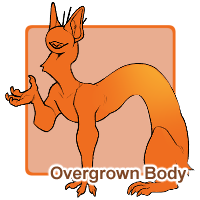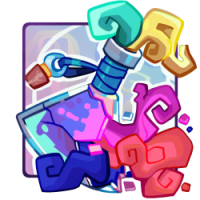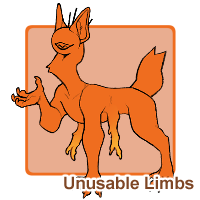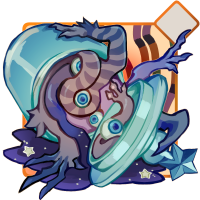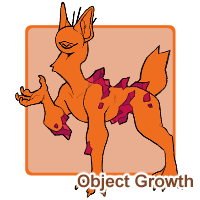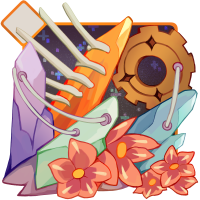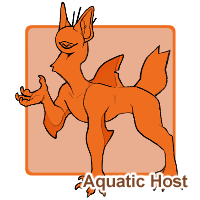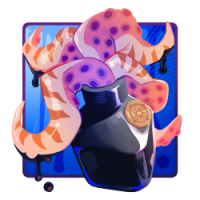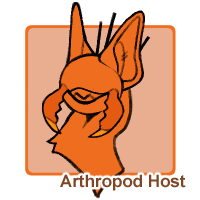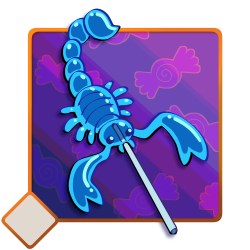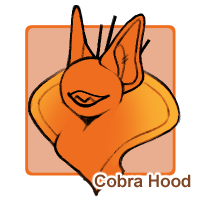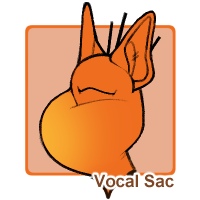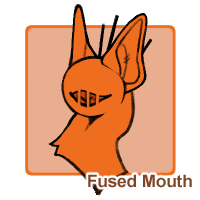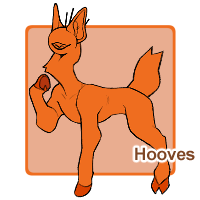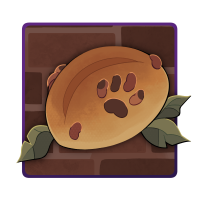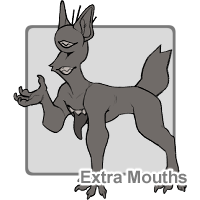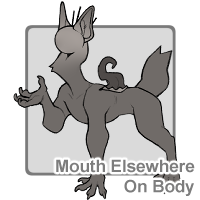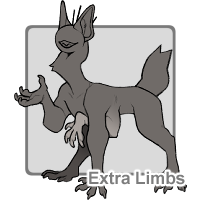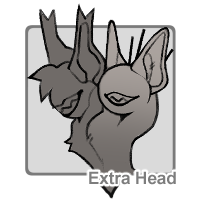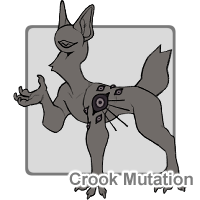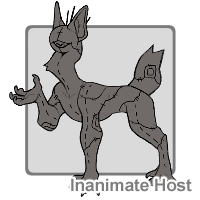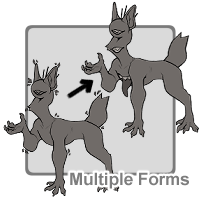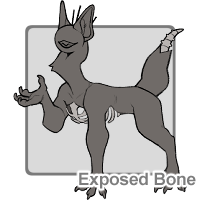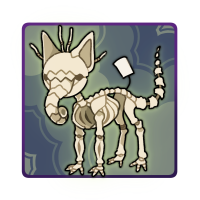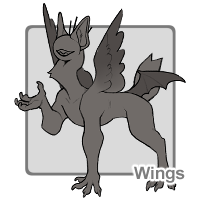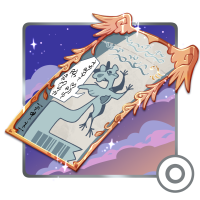Traits
[ Click here for Visual Sorter! ]
Overgrown (CCCats) (Myth)
[Body parts that are very clearly larger than are proportional to the character. Specific aspects will be listed in the trait's notes on each individual design]
- Can affect both arms [includes forearms and hands], both legs, torso, neck, or more specific traits such as Horns/Spikes
- Affects length or overall size
- Cannot Affect multiple large parts of the body
Can be applied by:
Unusable Limbs (CCCats) (Myth)
[Small additional limbs that have digits/joints that are unable to grab or grip objects]
- Limbs are smaller than standard sizing
- Limbs may be missing fingers, have digits varying in length, and have warped joint lengths
- Limbs must have claws unless using arthropod host
- Limbs can be anywhere on the body, and be placed asymmetrically
- Limbs may appear as small bug legs if using arthropod host
- Each instance of the traits adds 2 pairs of unusable limbs (four total limbs)
- Cannot resemble standard CCCat limb anatomy in shape or size
- Limbs cannot hold or grip objects, and are largely vestigial
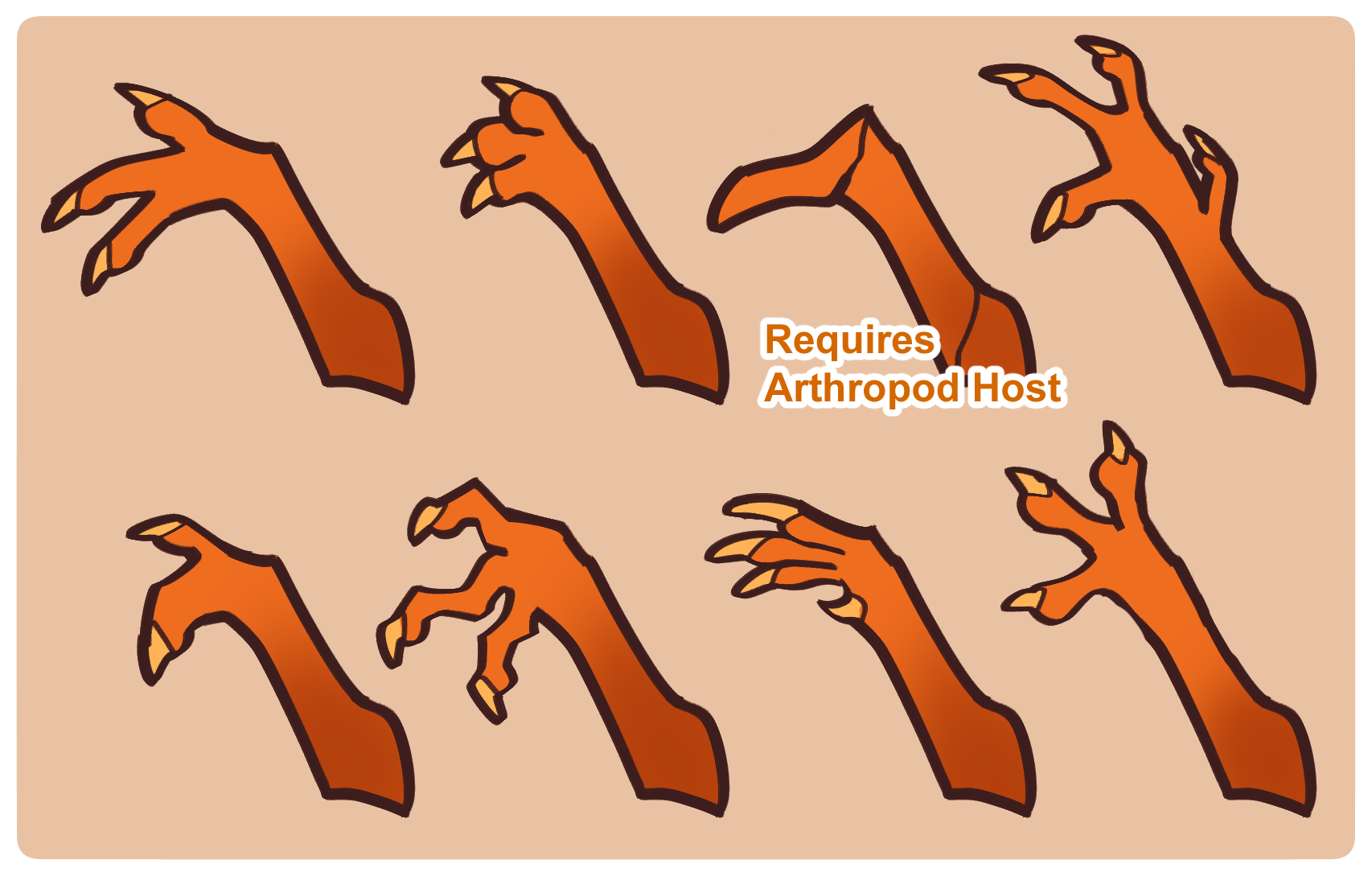
Can be applied by:
Funky Feet (CCCats) (Myth)
[Any natural difference in hand or feet shape]
- Feet can be naturally missing digits, extra digits, a dew claw, merged digits, split digits, differing digit placement [similar to bird feet], or wider toes [Lizard/Froglike]
- Feet must still have claws
- Can affect Hand Tails
- Cannot resemble normal hand/feet anatomy
- Cannot resemble human hand anatomy

Can be applied by:
Object Growth (CCCats) (Myth)
[The design grows some form of object across its body]
- Covers one type of object even if that object has more than one material [Example: wires with plastic coating and metallic ends]
- Object Growth includes Object Tail Tip if the tail's object matches the object growth type.
- Objects with multiple parts to it such as chains or multiple materials may be used as long as those parts would naturally appear as part of that object [Example: A lantern may hang from a short chain, have glass paneling, and metal casing. It would not include extra inserts such as candles, but those could be added as accessories]
- If the object glows [Light Bulb] or is metallic [Bell], it can have those effects, but the design would still require those respective marking traits if they were to appear elsewhere on the body.
- Can simulate weapon impalement, but weapon cannot be removed
- This can affect or replace the crown with the same object type [Example: Wire growth with wire crowns]
- Can be used to ONLY affect the crowns
- Plant Growth on top of the body is classified in the following way:
- If a plant type falls under a category listed below, it can have multiple different plants within that type shown on the body with one instance [Example: Flowers may allow the user to have roses, daisys, and tulips with one instance of the trait]
- If a plant type would naturally allow for additional aspects of it, such as a flower with a specific type of leaves, the flower may include those leaves. This does not allow for leaves to then grow elsewhere/independantly, unless accompanied by the flower [Further Example: A branch may also have leaves on it if using a type of branch that includes leaves]
- If a plant is incredibly unique such as bamboo, it may be classified under its own section and allow depiction for what the plant would naturally show.
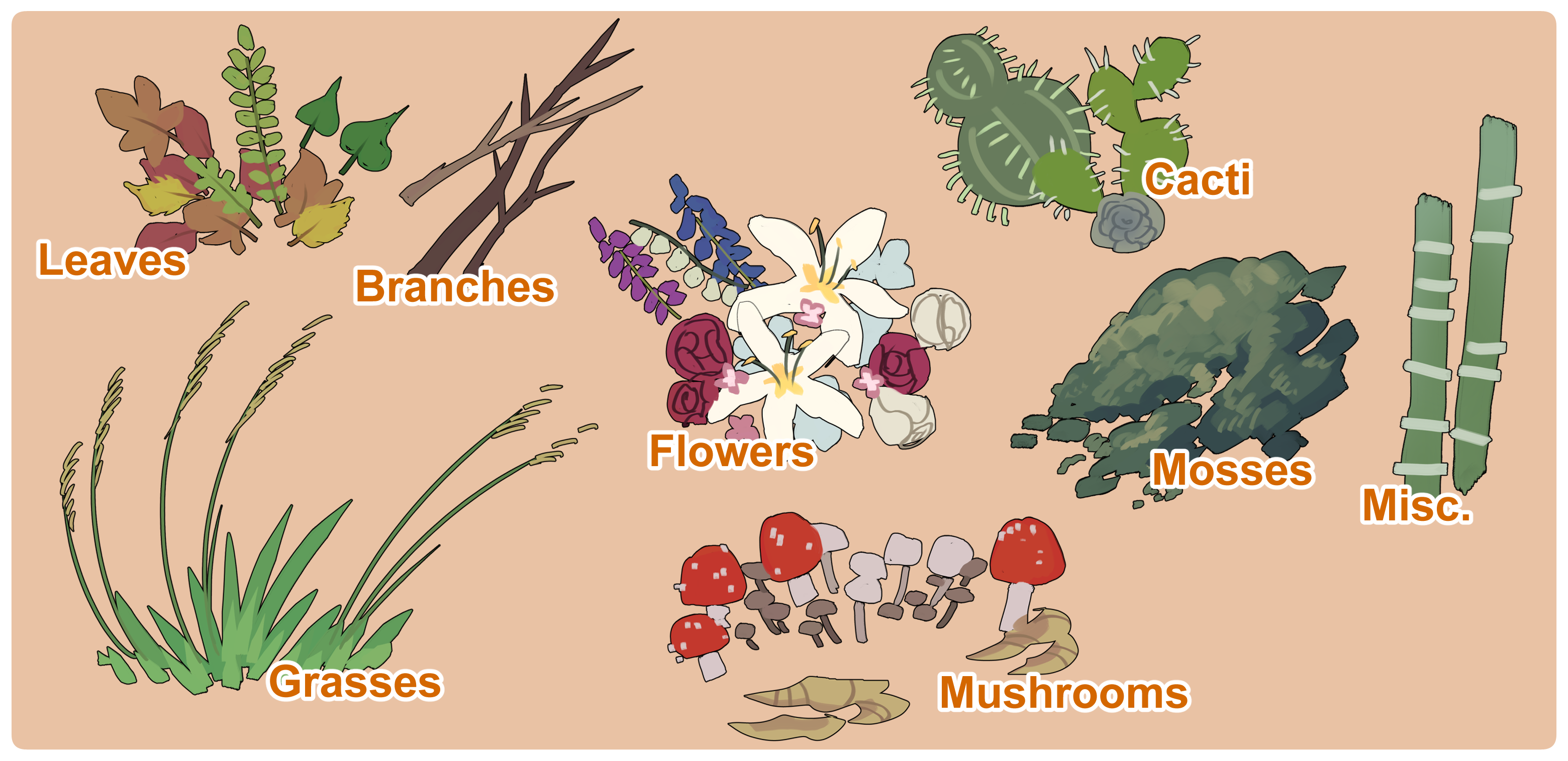
- Object growth should not replace an entire limb, and must appear as though its growing from the body rather than replacing it.
- Crowns cannot be replaced by plants or have plants growing on them with this trait
Can be applied by:
Aquatic Host (CCCats) (Myth)
[Any part of a design resembling an aquatic creature counts as 1 instance of this trait]
- Part of the body is affected by the traits of an aquatic creature. Examples are fins, anglers, jellyfish bells or tendrils, octopus or squid tentacles, etc.
- Octopus tentacles may have up to 8 tentacles. If these tentacles replace the tail, it also requires the Multiple Tails trait. Tentacles require suckers
- The design may also additionally have gills or webbing on their body without the need for an additional trait
- Any part of the design resembling an aquatic creature counts as 1 myth trait
- Aquatic Arthropod traits [Shrimp, Lobster, Crab] can be accomplished via either host trait
- Cannot alter the anatomy of limbs or hands/feet
Can be applied by:
Arthropod Host (CCCats) (Myth)
[Any part of a design resembling an arthropod creature counts as 1 instance of this trait]
- Part of the body is affected by the traits of an arthropod creature. Examples are segmented limbs, antennae, pincers/mandibles, augmented bug-like horns,
- The design may also additionally have chitinous plating, and small mouth/face mandibles or pedipalps without additional usage.
- Any part of the design resembling an insect, arthropod, or arachnid counts as 1 myth trait
- Can be combined with Wings to create insect-like wings
- Plating may be shiny, but will still require traits such as Metallic Markings/Coat or Opalsecent Markings/Coat for dramatic shines
- Cannot alter the anatomy of limbs or hands/feet
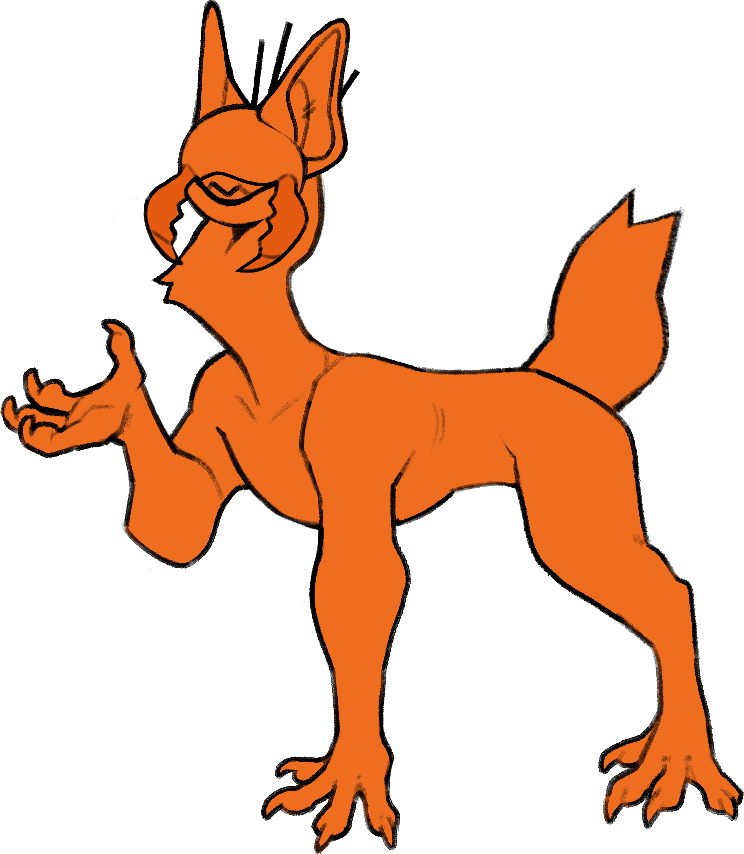
Can be applied by:
Cobra Hood (CCCats) (Myth)
[The neck can flare out like a cobra hood]
[The neck can flare out like a cobra hood]
- Can fold down against the neck
- Must still have a neck pouch
- Can be uniquely shaped
- Cannot alter the base anatomy of the neck

Vocal Sac (CCCats) (Myth)
[The neck contains an inflatable sac that allows a croaking noise]
- Can inflate the neck and make a loud croaking noise
- Neck pouch is often extra pronounced even when neck is not inflated
- Cannot alter the base anatomy of the neck

Fused Mouth (CCCats) (Myth)
[Mouth is fused via strips of skin]
- Can be straight, zig-zagged, or look semi-goopy
- Does not require the Squiggle Lips trait
- Mouth can still be opened to some degree
Hooves (CCCats) (Myth)
[Feet, Hands, or both are hooves]
- Can replace hands, feet, or both
- Can resemble be cloven/even toed or one toed hooves
- Cannot resemble an elephant hoof
Paws (CCCats) (Myth)
[Feet, Hands, or both are paws]
- Can replace hands, feet, or both
- Can retract claws
- Hands or feet may also still resemble standard anatomy, but be thicker and with pawpads to resemble hand-paws
- Must still have 4 digits
Can be applied by:
Extra Mouths (CCCats) (Touched)
[Two extra mouths placed anywhere on the body]
- Each instance of the traits adds two additional mouths. This does not include the default mouth
- Extra mouths can be placed anywhere on the body, but by default one must be in the standard spot on the face unless combined with Mouth Elsewhere on Body
- Can be placed on the tail to simulate a living tail, but the tail is not considered another entity and should not have anatomy resembling a head/existing creature
- Each mouth can have a tongue, but once the tongues differ from one another it is considered multiple tongues
- Teeth traits may apply to all mouths
- Mouth cannot cover an entire limb without Overgrown Mouth
Mouth Elsewhere On Body (CCCats) (Touched)
[Mouth is located elsewhere than its standard location and orientation on the face]
- Includes placing the mouth elsewhere on the head, as well as repositioning the mouth
- Can be placed anywhere on the body
- Can be placed on the tail to simulate a living tail, but the tail is not considered another entity and should not have anatomy resembling a head/existing creature
- Can be combined with Extra Mouths to place all mouths elsewhere on the body
- Mouth cannot cover an entire limb without Overgrown Mouth
Extra Limbs (CCCats) (Touched)
[The CCCat gains additional limbs above the standard number of limbs]
- Each instance of the traits adds two additional pairs of limbs (4 total additional limbs). This does not include the default pair of legs and arms.
- Design can have six arms and two legs, or two arms and six legs, or another combination of the two
- Limbs may be placed asymmetrically
- Limbs must match standard CCCat anatomy unless combined with other traits
Extra Head (CCCats) (Touched)
[An extra head placed somewhere on the body]
- Extra head can be placed in standard head positioning or elsewhere such as the tail
- Heads may share the same head traits. These traits do not have to present exactly the same, nor are heads required to share traits. [Example: Both heads can have 5-7 Crownspikes with one instance of the trait]
- By default, heads share one tongue and one eye. This may display as one tongue that switches between mouths, or the same tongue in each mouth
- Heads should resemble the default species head, and cannot be another species
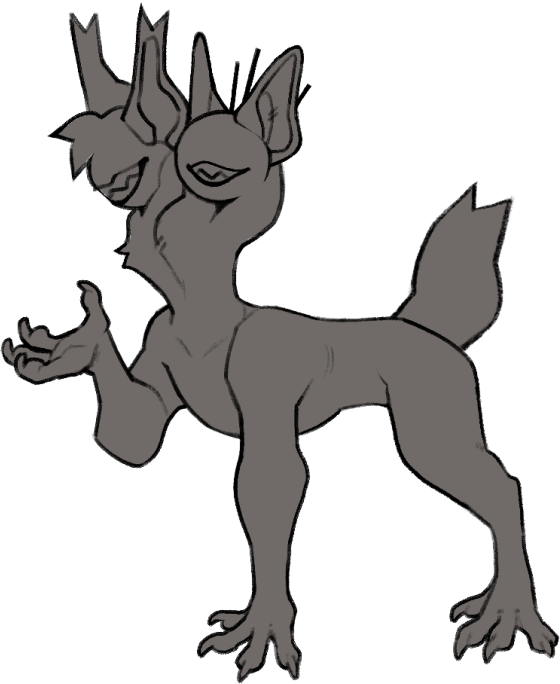
Crook Mutation (Touched)
[The CCCat develops multiple eyes fused to the body, mimicking a Crook's eye clusters]
REQUIRED -
- Multiple Eyes fused to the body, mimicking and using the traits of a Crook's eye clusters.
- One eye must be clearly larger than the others, and this eye is by default surrounded by crowns, that are affected by the traits of CCCat crowns. To be placed elsewhere, Crowns Elsewhere on Body is required.
- No External Eye
- OPTIONAL -
- Have dead eye colors that drop below the 43% Hue/Saturation requirement
- Have an inner humanoid mouth akin to a Crook's. They do not gain two separate tongues
- Have tendrils. Any tendril traits should be referred to under the Crook tendril traits section. They will no longer have crowns centered around the eye if using tendrils
- Have a face patch with exposed teeth
- Have knuckle bones on the hands and feet [Other horns/spikes will require the trait]
Inanimate Host (CCCats) (Touched)
[CCCat takes a host that is inanimate or an object, and the body's anatomy is influenced by this. This trait is displayed as part or all of the host being replaced with the specific object as part of its body]
- Part of or all of the body is replaced by an inanimate object or substance
- Examples are robotic bodies, plush bodies, armor bodies, glass bodies, certain foods, etc
- Common occurences and depictions are seen when the entire tail is replaced by an object
- This trait cannot create depictions that would be done with Defects unless the entire body is effected. Defects such as Earth defect, which can replace limbs with crystal/stone, or Metal Defect that replaces the limbs entirely with metal
Multiple Forms (CCCats) (Touched)
[The design has more than one form]
- Creates an all common form with each application
- Traits can be added like normal to each new form, or when adding a new form, you may swap traits from the base form. They must then be removed from that form for use on the new one.
- Eye and tongue by default are the same between forms. Eye and tongue can be made to change between forms by Multi-Form Eye and Tongue
- Species must be the same
- Each additional form requires one additional application of the trait.
- Cannot be applied by Touched Trait Tickets
Exposed Bone (Touched)
[Due to injury, bone remains exposed]
- Can occur due to permanent injury or natural formation
- Can affect one or multiple parts of the body
- Skeleton should be a CCCat skeleton, and not resemble another creature.
- Marking effects can affect bones, and bones may have markings
- Muscle, organs, or blood cannot be exposed
- Cannot turn the entire body into a skeleton
Can be applied by:
Wings (CCCats) (Touched)
[Body has sets of wings]
- Wings can be feathered, bat wings, or a mix of the two.
- Wings may be anywhere on the body and be any size. Can be overgrown with the addition of the Overgrown trait
- Wings may be hidden. Certain traits such as crowns or CCCat mutation that are located on wings are automatically moved to the back when wings are hidden.
- Wings grant levitation magic to allow for flight regardless of size
- Arthropod Host may change wings to bug-like and allow for translucency
- Aquatic Host allows for fin-like wings
- Begins with 2 pairs or wings [4 total]. Each new application of this trait allows 2 new pairs [4 wings]
- Webbing or Feathers cannot be placed elsewhere on the body without their respective traits
